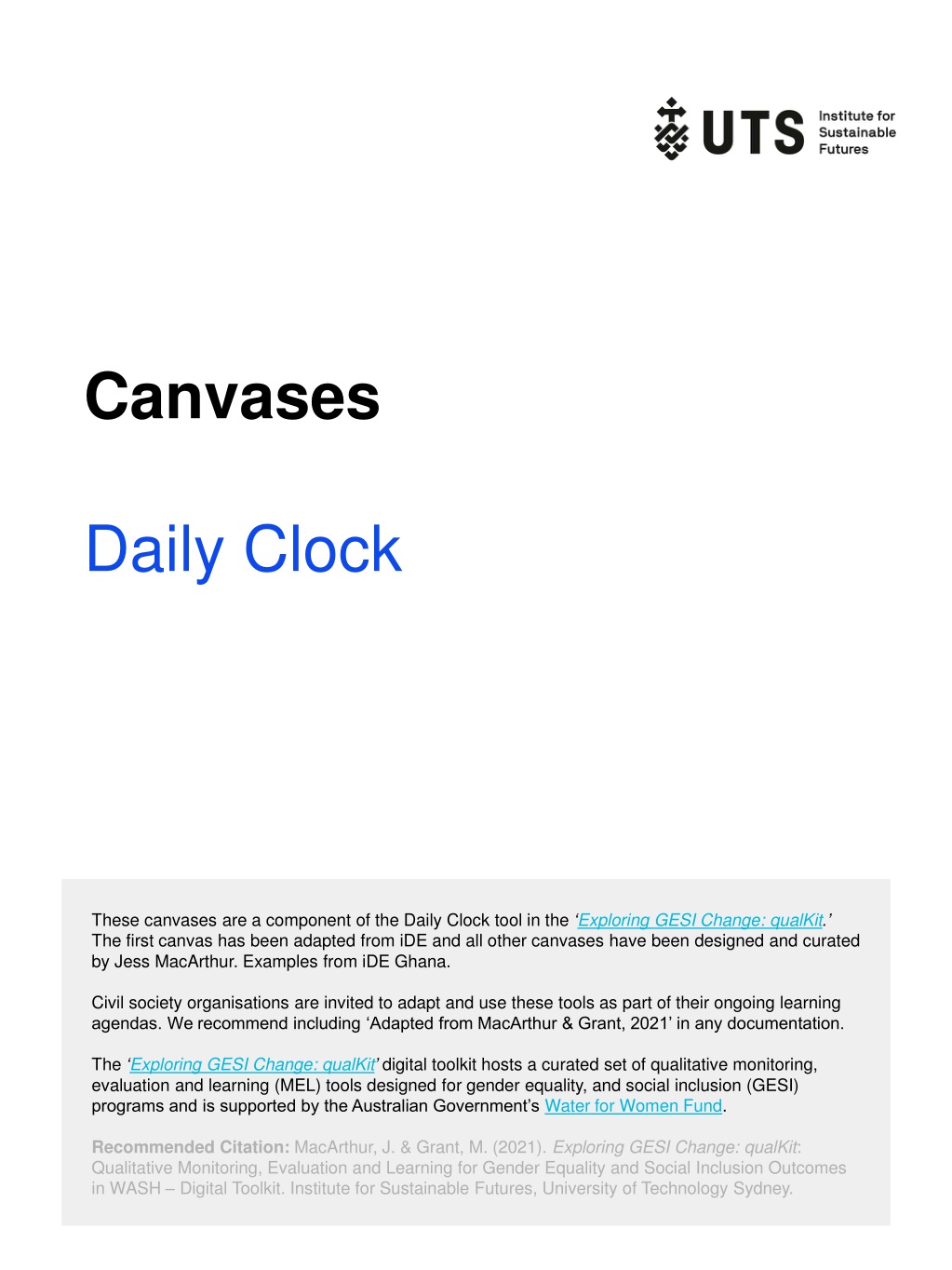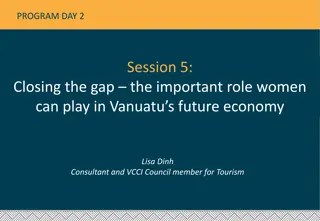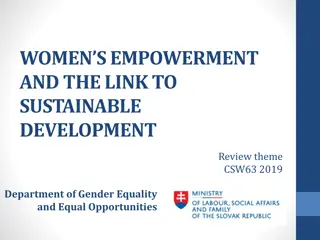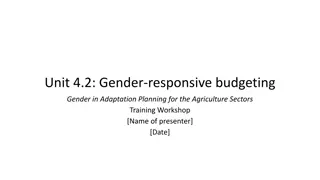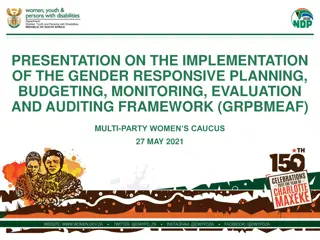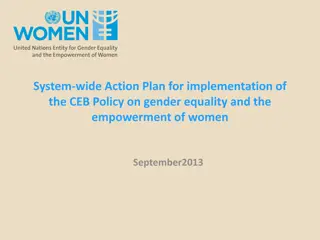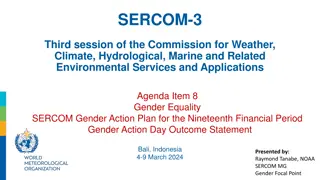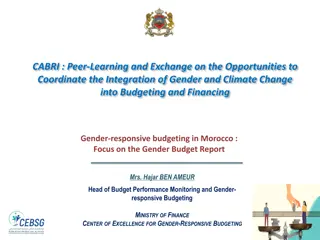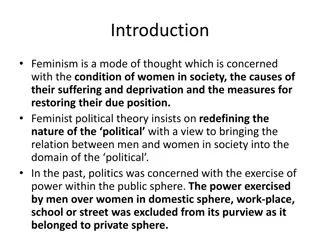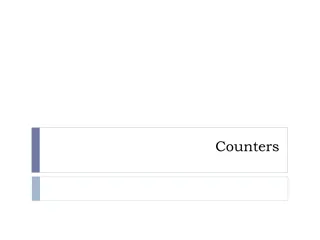Exploring GESI Change: Daily Clock Canvases for Gender Equality Programs
Explore the Daily Clock tool from the Exploring GESI Change qualKit, featuring adaptable canvases designed for gender equality and social inclusion programs. Use these canvases to engage participants in marking daily activities with smiles or frowns, capturing points of enjoyment or displeasure. Encourage discussion and gather key insights for analysis during interviews or workshops. Recommended for civil society organizations aiming to enhance learning agendas in GESI initiatives.
Download Presentation

Please find below an Image/Link to download the presentation.
The content on the website is provided AS IS for your information and personal use only. It may not be sold, licensed, or shared on other websites without obtaining consent from the author. Download presentation by click this link. If you encounter any issues during the download, it is possible that the publisher has removed the file from their server.
E N D
Presentation Transcript
Canvases Daily Clock These canvases are a component of the Daily Clock tool in the Exploring GESI Change: qualKit. The first canvas has been adapted from iDE and all other canvases have been designed and curated by Jess MacArthur. Examples from iDE Ghana. Civil society organisations are invited to adapt and use these tools as part of their ongoing learning agendas. We recommend including Adapted from MacArthur & Grant, 2021 in any documentation. The Exploring GESI Change: qualKit digital toolkit hosts a curated set of qualitative monitoring, evaluation and learning (MEL) tools designed for gender equality, and social inclusion (GESI) programs and is supported by the Australian Government s Water for Women Fund. Recommended Citation: MacArthur, J. & Grant, M. (2021). Exploring GESI Change: qualKit: Qualitative Monitoring, Evaluation and Learning for Gender Equality and Social Inclusion Outcomes in WASH Digital Toolkit. Institute for Sustainable Futures, University of Technology Sydney.
DAILY CLOCK CANVAS Name Date Location
DAILY CLOCK CANVAS Name Date Location midnight 15:00 9:00 noon
DAILY CLOCK CANVAS Name Date Location Time Activity Get up Go to bed
DAILY CLOCK CANVAS Name Date Location 24 18 6 12
DAILY CLOCK CANVAS Name Date Location 24 18 6 12
DAILY CLOCK INSTRUCTIONS Select one of the above canvases to use with participants and print on A4 or A3 paper. One per person. During the interview, workshop or focus groups, and at the appropriate time, follow these sub-steps. 1. Introduce the concept of a daily clock. What are you trying to explore? 2. Starting with when a participant wakes up, have them mark the clock with key activities. Mark the start and end of activities with times and label them. If used retrospectively, the inside of the clock can be used for the past experience, with the outside as the present experience. If participants struggle to define an average day, select to pick a particular day (for example Monday). 3. Request participants to then mark each activity with either a smile or frown as a point of enjoyment or a point of displeasure. Probe participants to describe and explain their responses. 4. If in an appropriate group setting, allow participants to share their ideas with the wider group for discussion. During the activity, make a note of important aspects that are useful for analysis: age, status gender, role, religion, ethnicity, experiences. Write down observations. If applicable and with consent, take photos of the canvases for your records.
DAILY CLOCK EXAMPLES Example from: iDE (2018). The Women of Sama Sama: Human-Centered Value Chain Research Assessment and Design.
